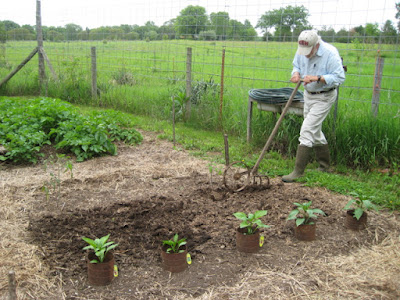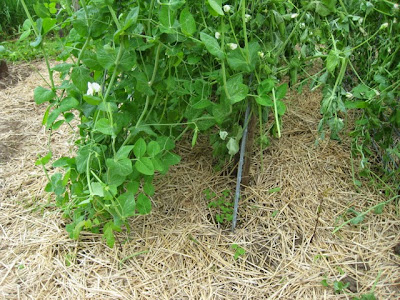Having
an herb garden on the deck is turning out to be a great idea. The herbs are
thriving in their pots. For one thing, they get a lot more of attention than
herbs growing in the garden. For another, they are not in danger of being
overwhelmed by nearby plants, as herbs often are when in the ground. The greatest advantage for me is that I can
harvest herbs while sitting in a deck chair, which sure beats standing bent
over in the garden. (At my age, sitting on the ground or squatting to cut herbs is not an option.)
From
the bottom of the photo the plants are thyme, oregano, parsley, rosemary, sweet
potatoes growing slips, and curry plant. Sweet potatoes aren’t herbs of course,
but this is a nice spot for their developing shoots where I can keep a close
eye on them.
If
some of the herbs look as if they have flat-top haircuts, that’s because
they’ve just been through the first harvest, which is now drying on a tea towel
in the kitchen. How long the drying process will take depends on the weather. In damp
weather it may take weeks, but in sunny, dry weather it can be finished in a
few days. The main consideration is to keep them out of the sun.
From
the left the sprigs are curry plant, thyme, basil, and rosemary.
Homegrown
and harvested herbs seem far more flavorful than commercial ones. I don’t know
how commercial ones are grown, harvested, and dried, but I’ll bet home grown
herbs get a lot more loving care than those in commercial ventures.
Copyright 2015 by Shirley Domer









